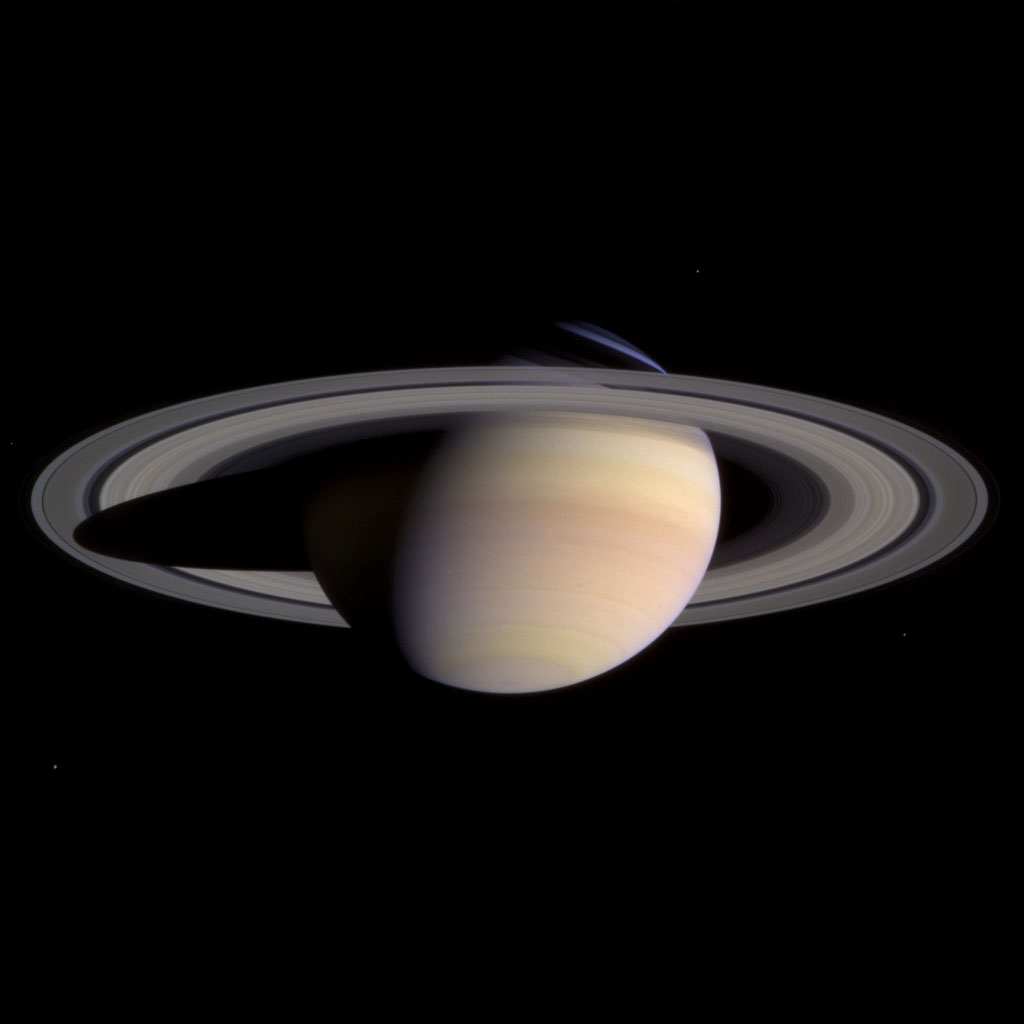Even through a small telescope, Saturn takes on a beautiful pale yellow with hints of orange. With a more powerful telescope, like Hubble, or images captured by NASA’s Cassini spacecraft, you can see subtle cloud layers, swirling storms mixing orange and white together.
You can also check out these cool telescopes that will help you see the beauty of planet Saturn.
But what gives Saturn its color?
Like Jupiter, Saturn is made almost entirely of hydrogen, a small amount of helium, and then trace amounts of other compounds, like ammonia, water vapor and hydrocarbons.
The colors we see come just from the upper cloud layers of Saturn, which are largely composed of ammonia crystals, and the lower level clouds are either ammonium hydrosulfide or water.
Saturn has a banded pattern in its atmosphere, similar to Jupiter, but they’re much fainter and wider near the equator. It also has long-lived storms – nothing like Jupiter’s Great Red Spot – which often occur when the planet nears the summer solstice for the northern hemisphere.
Some photographs of Saturn captured by NASA’s Cassini spacecraft make the planet look blue, similar to Uranus. But this is probably just because of how the light is scattering from Cassini’s perspective.
This article has a nice full-color image of Saturn, and another nice wallpaper of Saturn.
Here’s a beautiful image of Saturn from Solar Views, and a false color image from Hubble.
We have recorded two episodes of Astronomy Cast just about Saturn. The first is Episode 59: Saturn, and the second is Episode 61: Saturn’s Moons.


is mars lighter than saturn